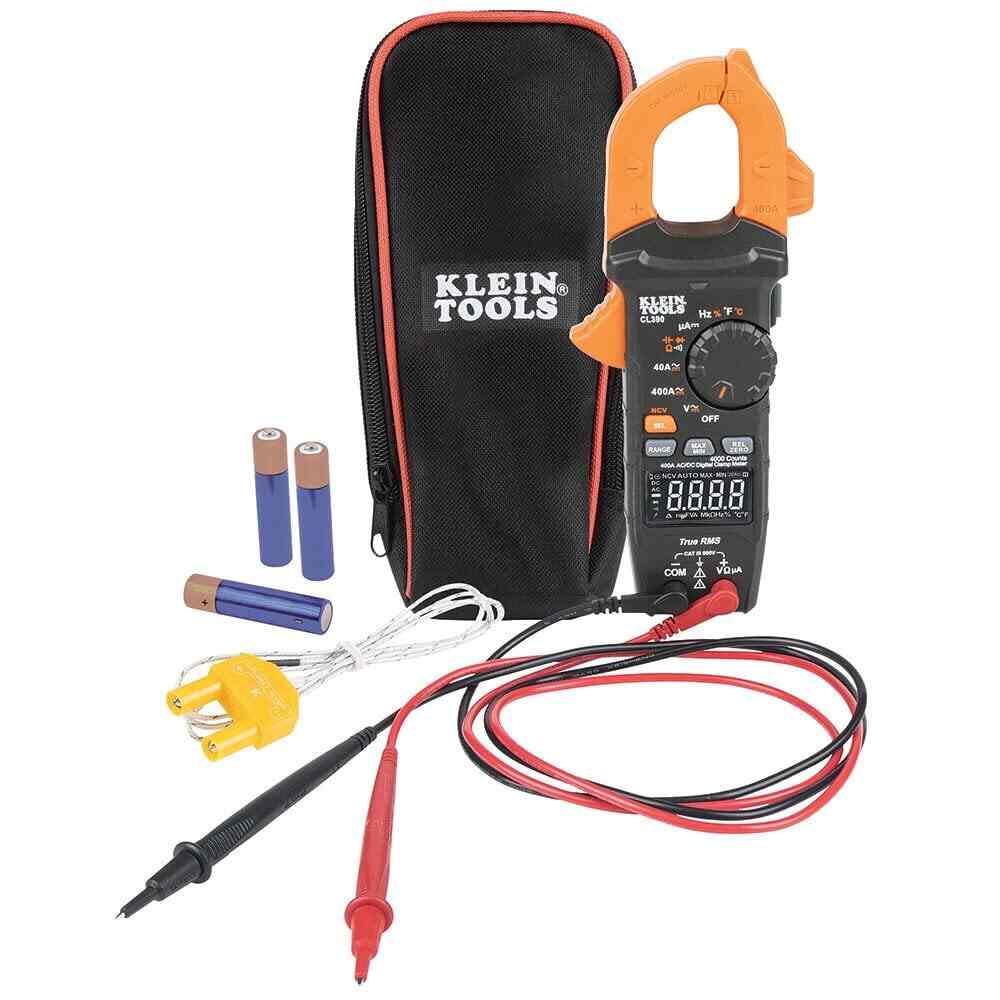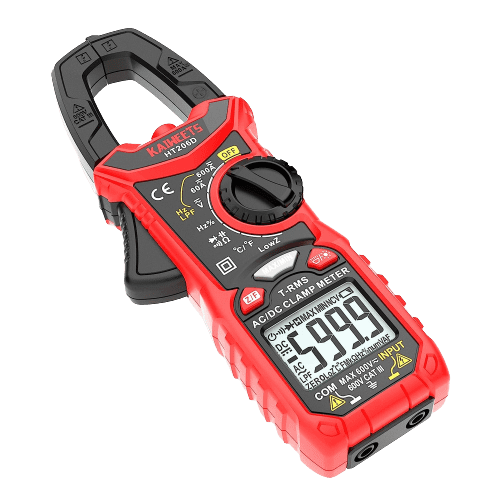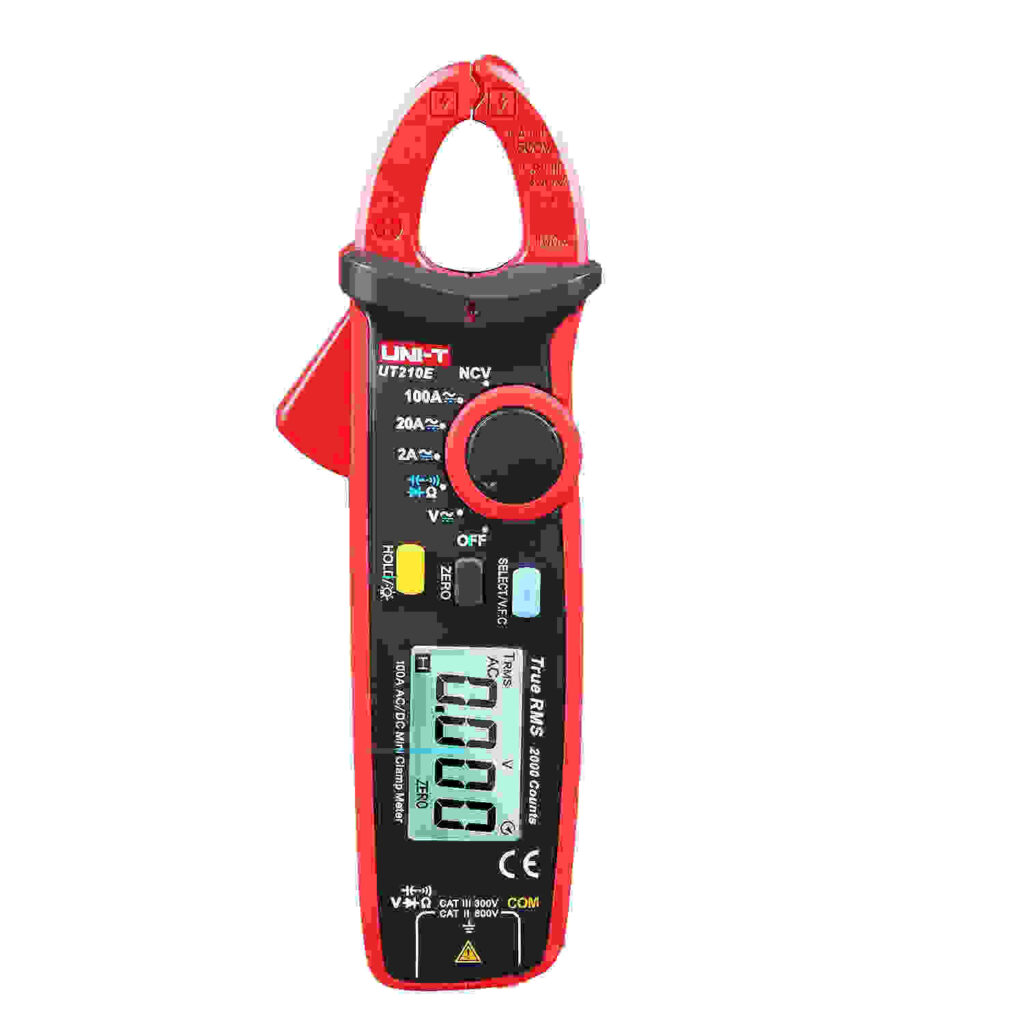A clamp meter is an important tool for both AC and DC systems. Especially, when we are dealing with solar energy, their importance increases.
Solar energy is one of the efficient renewable energy sources. We obtain solar energy through solar panels (photo-voltaic cells), CSP(Concentrated Solar Power), and STE(Solar Thermal Energy).
Commonly, we use solar panels to capture solar energy. We either convert it to AC or use it directly.
A lot of maintenance, troubleshooting, and counter-checking are involved when we are dealing with solar panel systems.
Hence, we need the best clamp meter for solar energy systems. Because we would be dealing with AC and DC at the same time.
We have many options in hand when getting a good clamp meter for solar energy systems.
The problem arises when a clamp meter does not perform as promised. It costs us money, time, and discomfort.
Well, not anymore…
Through this blog, we are going to help you get an ideal clamp meter for solar energy systems by using our expertise in the field.
So stay with us till the end of the blog.
Choosing the best clamp meter for solar
Once we get a proper clamp meter for these systems, all these tasks become easy for us.
We are bold enough to state that Klein Tools CL-390 is one of the best clamp meters for solar panels and their systems. It measures both AC and DC voltage and current with proper accuracy. When it comes to user-friendliness, we found it easy to use and comfortable to carry.
Besides, there are other options for us. For that, we must learn the qualities of a good clamp meter for AC and DC. Let’s find out about these factors.
a. AC/DC Range
Be aware of the ranges of AC and DC voltage and current. This factor is crucial but unfortunately ignored.
A proper range for current and voltage read with precise value without any damage.
Commonly, 100-300Amps of the current range would be sufficient. For voltage, 400V is a good value for AC and 120V is good for DC.
b. True RMS
It is a common misconception that we deal with only sinusoidal signals besides DC. We also deal with non-sinusoidal signals.
These non-sinusoidal signals are the switching signals for power transistors.
The true RMS reading helps us to measure both sinusoidal and non-sinusoidal values. This factor must be checked before getting a clamp meter.
c. Durability
A good clamp meter should be durable enough for fieldwork. A small drop, rise in temperature, and power spikes could not be the problem for a standard clamp meter.
More than half of the tasks in solar panel installation are related to fieldwork. Hence durability is more important in this field than others.
d. Safety
Of course, safety should be our primary concern while dealing with AC and DC circuits. A good clamp meter must protect itself and its user from the danger of current.
Specifically, we look for CAT-III and CAT-IV safety. The highest value of voltage is most preferable.
While discussing the features of clamp meters, we will mention the safety protocol of the clamp meter.
e. Ready for fieldwork
Fieldwork is a very sophisticated task. It checks our readiness and agility in the corresponding task.
The best clamp meter for solar panels and their accompanied system is flawless when it comes to fieldwork.
Durability, sustainability, user-friendliness, toughness, temperature sustainability, and battery longevity are some defining factors for a good clamp meter.
Let’s go through our selected clamp meter for solar systems.
List of top solar clamp meters
We managed to shortlist the best clamp meter for solar panels and their AC system based on the above parameters.
Let’s check it
1. Our Selected: CL-390
Our top selection for the said function is Klein Tools CL-390 (Amazon link). A person with a little touch of electronics knows this brand.
This model of the Klein Tools is specifically designed for AC and DC circuits. Besides, it is accurate, durable, and compatible with fieldwork.
Let’s further expand its qualities…

The Good
This model has a unique reverse contrast display for easy reading. This unique feature is quite impressive for day as well as night work. The reading is shown vividly and easily to the eyes.
The range of current of 400 Amps for AC is more than enough for our use. While dealing with solar panels array for inverter, we deal with less than 300 Amps. Thus, this range is sufficient for the application.
DC is measured in micro Amps for lower values. Although, we can measure higher value DC, lower than mili Amps are scarcely available in clamp meter. This model gives us micro Amps in DC.
We can perform many additional functions through it. Besides its basic function, we can use it for NCVT (non-contact voltage testing), measuring temperature, AC/DC voltage, resistance, and frequency.
To improve accuracy, all readings are automatically given in true RMS. Reading in true RMS is very important for a clamp meter. It gives a boost to accuracy and preciseness.
This model is safe and durable for use in the AC/DC application. The safety of CAT-III (600 V) is ideal for the application. Moreover, this clamp meter is user-friendly and durable as it can sustain a 2 m drop.
There is an additional magnet for hanging the clamp meter. It is purely optional but essential for our convenience. We can fix it on a support and freely monitor readings.
It weighs only 236 grams (0.52 pounds), good for mobility. Portability and mobility are important for a clamp meter. With this weight and smart shape, we can carry this clamp meter to our site and use it with ease.
The Bad
We found a little awkwardness while measuring the current. There is a manual option for 40 Amps and 400 Amps. we have to select it manually to avoid confusion in reading.
It is highly preferred to have automatic selection for current. This little bit of manual selection confuses users in case of overload on 40 Amps as they forget to change the knob to 400 Amps.
The Downright Ugly
There is an additional effort for measuring DC. We press the SELECT button for DC measurement. While this effort could be removed by simply providing more options on the knob.
This problem can be rectified by improving its automation. However, some of our colleagues got used to it and do not consider it a flaw.
2. Also Great: HT-206D
Besides our selected clamp meter, Kaiweet’s HT-206D is one of the best clamp meters when we are dealing with AC and DC.
This model is simple, accurate, durable, and sustainable. It consists of additional relevant functions which are used for solar panels.
Whether checking the resistance of wires or testing the existence of voltage in a circuit, this model will help you dearly.
Let’s look into its distinguishing features:

Salient Features:
- To improve accuracy, Low input impendence is installed. Moreover, we can avoid stray voltage by this function
- AC/DC voltage and current can be measured with precise reading
- The range for current is 600 Amps which is more than enough for this specific application.
- The safety of CAT-III (600V) is a promising value for our safety
- This model is more portable. It has less weight (430 grams) and is easy to grip.
- A double layer of insulation augments the safety of users.
These defining features make us confident to say that KAIWEETS HT-206D (Amazon link) is an excellent choice for solar systems.
It is handy and accurate. We suggest this clamp meter to our clients and students due to its reliability and sustainability.
While dealing with AC and DC at the same time, this clamp meter is an ideal choice at the given reasonable price.
3. Also Great: UT-210
This clamp meter of UNI-T is one of the most efficient clamp meters for AC and DC wiring.
This model is highly preferred for its portability as it has less weight and is small in size. Hence, it is ideal for fieldwork.
Besides all these qualities, there is no trade-off for accuracy. The reading is accurate and to the point.
Let’s study some of its salient features.

Salient Features:
- Its less weight of 170 grams makes it an ideal clamp meter for carrying in pockets.
- True RMS reading makes it capable of measuring sinusoidal and non-sinusoidal signals. This application is crucial for AC and DC measurement at the same time.
- It can measure 100 Amps of AC and DC. Although we go for a higher value, this value is enough.
- Voltage up to 600V AC can easily be measured.
- To reduce the size of the toolbox, it has many additional functions, which make it more portable with this single clamp meter.
- Its small size makes it very helpful in carrying from one place to another. Moreover, it takes less place to keep.
These promising features make us bold enough to say that UNI-T UT-210 (Amazon link) is also a good clamp meter for AC and DC applications.
Although it is chosen for its small size and weight, this model is equally helpful in accurate reading.
We listed this clamp meter for its diverse applications in different fields. However, when it comes to solar panels, we found it the best clamp meter for AC and DC applications.
Conclusion
Summing up, the best clamp meter for solar panels and their AC system is determined through different factors. These factors are the following:
- AC/DC range for voltage and current
- true RMS reading for accuracy
- Friendliness with fieldwork
- Safe to use
- And durability
Upon assessment, we found Klein Tools CL-390 (Amazon link) an excellent clamp meter for measuring both AC and DC.
As mentioned, this clamp meter is fit on every aspect of AC/DC circuits. Durability and sustainability are its defining factors.
It is simple, user-friendly, light, multifunctional, and safe for AC/DC circuits. We can use it for troubleshooting, maintenance, and installation of DC to AC conversion.
Hereby, we suggest these options. Our little piece of research helped you in your quest.
Good luck and keep visiting…
Questions
There might be some sort of confusion regarding the clamp meter. We want to answer all your questions but it would not be possible. However, here are some questions with answers that might help.
Q1: How can a clamp meter be used in solar panel applications?
As we know a clamp meter measures current through non-invasive methods. It measures AC and DC.
Hence, we can easily measure the output current of a solar panel or its array, track its value to an inverter, and then check the output current of the inverter.
In this manner, we traced our desired value of current through a clamp meter.
Q2: Does the clamp meter only help in maintenance and repair?
Of course not. While installing the solar panel array, we do the cold test through the clamp meter.
After the installation of the whole system. We trace down the current from the solar panel (which is DC) to the inverter. This answers the following question:
Does the solar panel produce the desired amount of current?
Does the inverter get the proper current?
Moreover, we can also check the output current of the inverter – AC.
Q3: What is an important factor for a clamp meter for solar?
We have already mentioned some important factors in detail. However, the most important factor is the capability of measuring AC as well as DC.
For a direct connection from a solar panel to a DC device, we measure only DC. However, regarding the conversion, both AC and DC are important.
Besides, accuracy and user-friendliness are also some defining factors.
Q4: What is the difference between CSP and STE?
CSP concentrates solar rays to a fixed position in a tower. This tower contains water that heats up to form steam. Further, steam rotates the steam engine for the production of electricity.
STE works for either electric or non-electric applications (cooking, hot water, etc.).
Q5: Can we store solar energy?
Yes. we can store solar energy through DC batteries, heated water, and other methods.
DC batteries get charged through an optimizer, which is then used directly or indirectly (inverter).
Water is heated through sunlight and then used for different purposes. Architects use this method to moderate the temperature of a house in cold regions.
Other useful posts:

Interesting, being a user of DC power for many home appliances, many times i faced low output of DC batteries. It was time consuming to figure out weather battery capacity or the wire from the panel to the battery has deteriorated. And most of the times the later comes out to be the reason behind it. Using this device at panel and battery end can easily tell the health/quality of wire.
Exactly, we often do not know about the best instrument to diagnose a probelm.
This is our quest to let everyone know about these instruments.